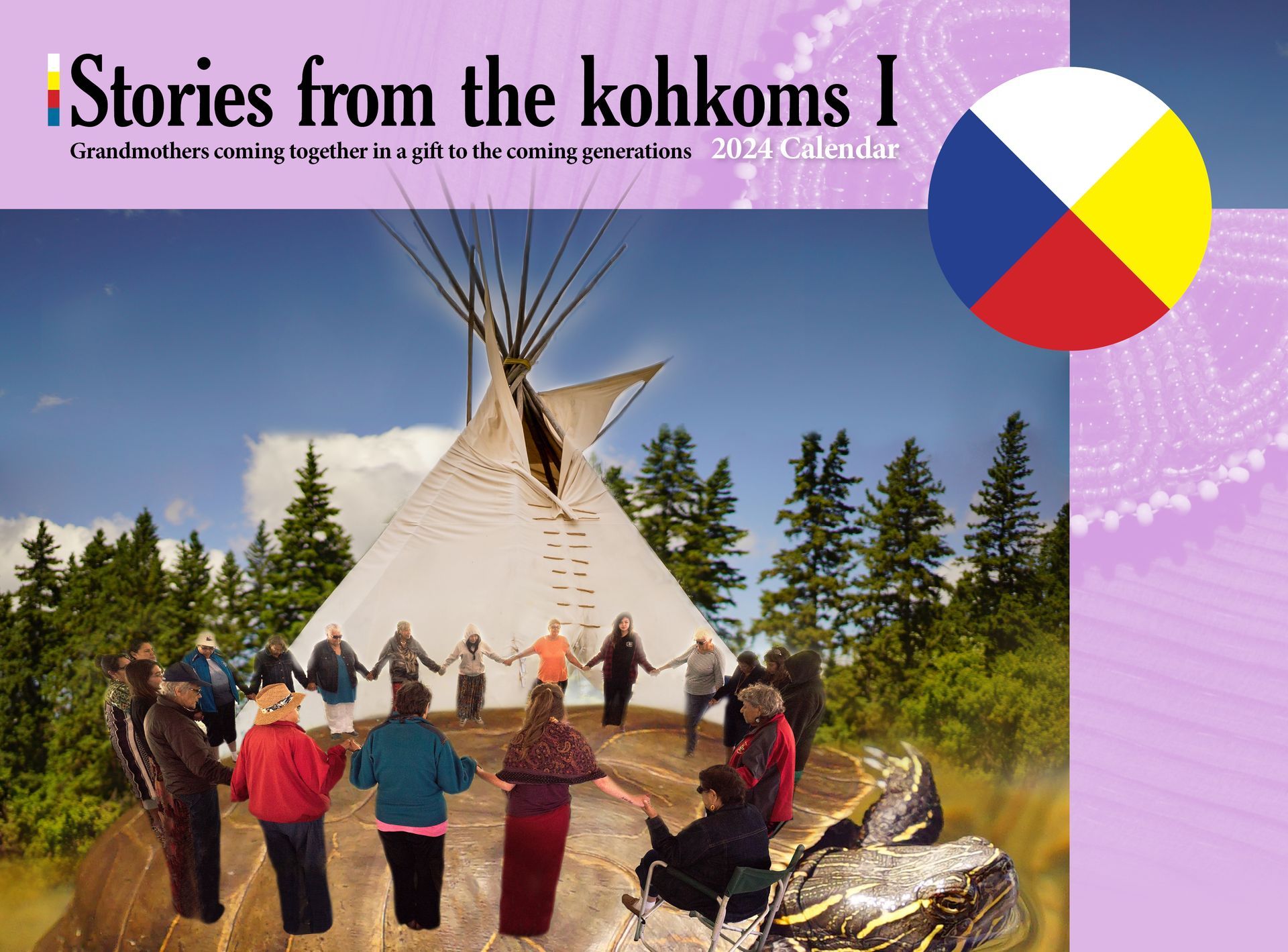STORIES FROM THE KOHKOMS
Stories From The Kohkoms I calendar is a legacy work meant to capture messages that grandmothers and female traditional Elders wish to pass on to the coming generations of their own families and communities, and to the public.
The project began with Elsie Paul, a Cree/Métis Elder who is a dedicated volunteer and community member. She and her kind friends at the Kohkom Kisewatisiwin Society are the reason this calendar exists. Without their encouragement, ideas, and willingness to share cultural information to be assembled in this form, it would not have come together.
The women who contributed information to be shared in the calendar are from various Indigenous nations, all with different origins, and life experiences. They decided to work together to create a powerful gift for their communities in collaboration with Circle Teachings Publishing.
It has been an honour for the Circle Teachings team to work alongside these women to bring this publication into form.
Included in this resource are:
- Women-focused history timeline from the 17th century to today.
- Fifty two photographs and illustrations are included to accompany both the timeline and story months.
- Fifteen stories that introduce teachings shared by kohkoms.
- Building Relationship
- Crying Is A Ceremony
- Water Is Life
- We All Come From The Spirit
- Kindness And Forgiveness
- Plant Medicines
- Wahkotowin
- Importance Of Storytelling
- Language and Culture
- Traditional Child Rearing
- Nature Is Our Teacher
- Traditional Foods
- Traditional Arts
- Four Directions
- Role Of Ceremony
- Altogether 46 pages of colour images and 9,000 words.

Slide title
Write your caption hereButton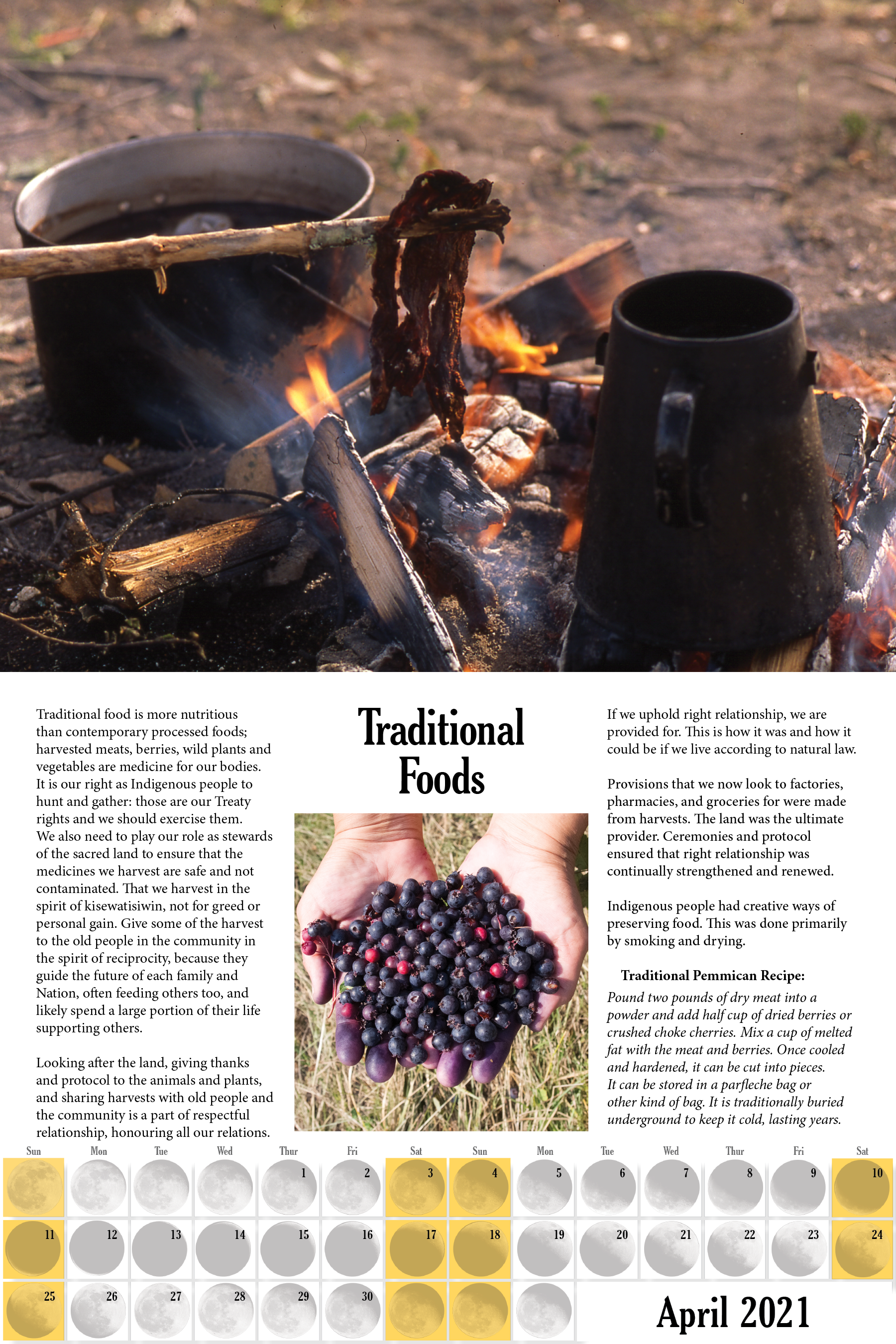
Slide title
Write your caption hereButton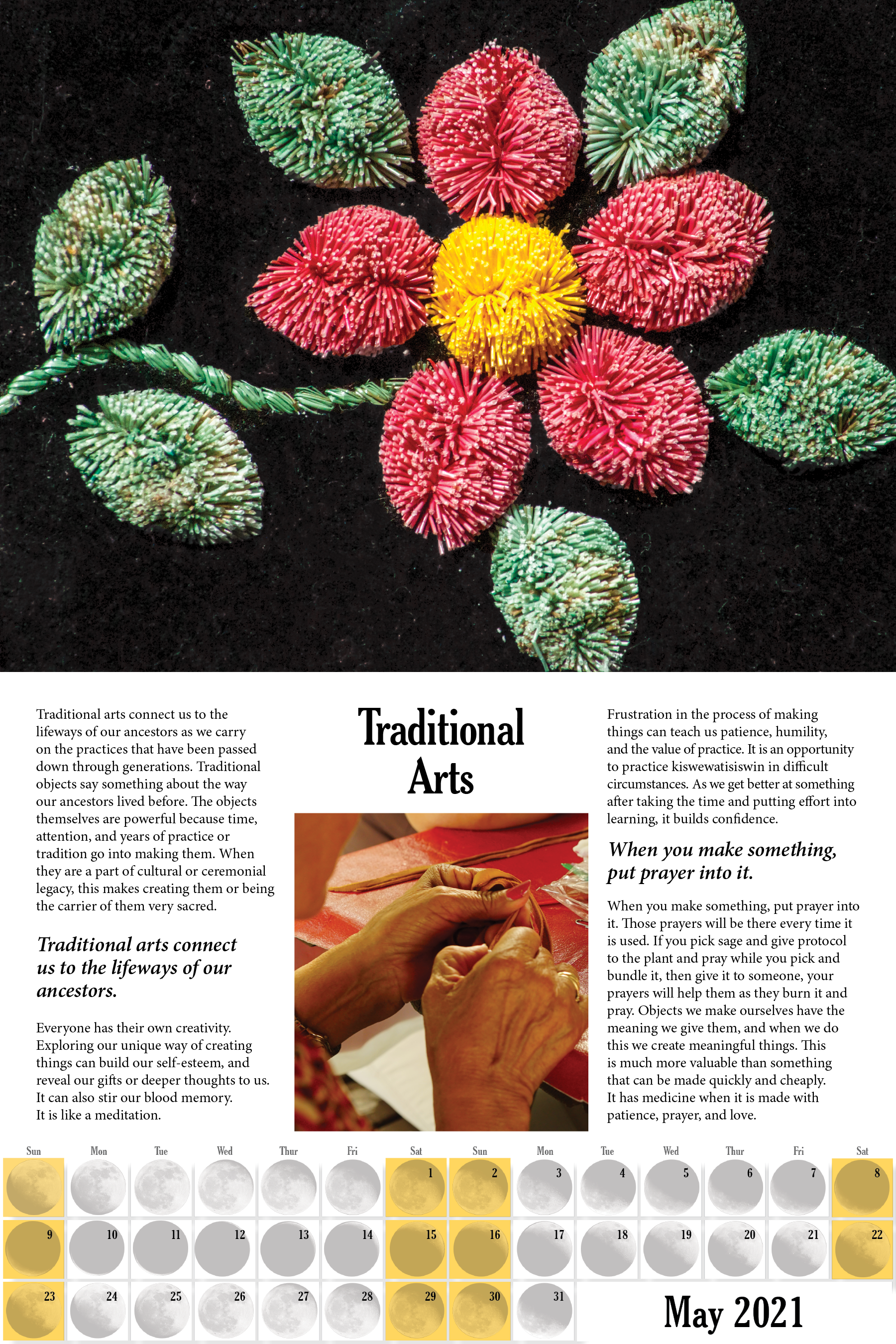
Slide title
Write your caption hereButton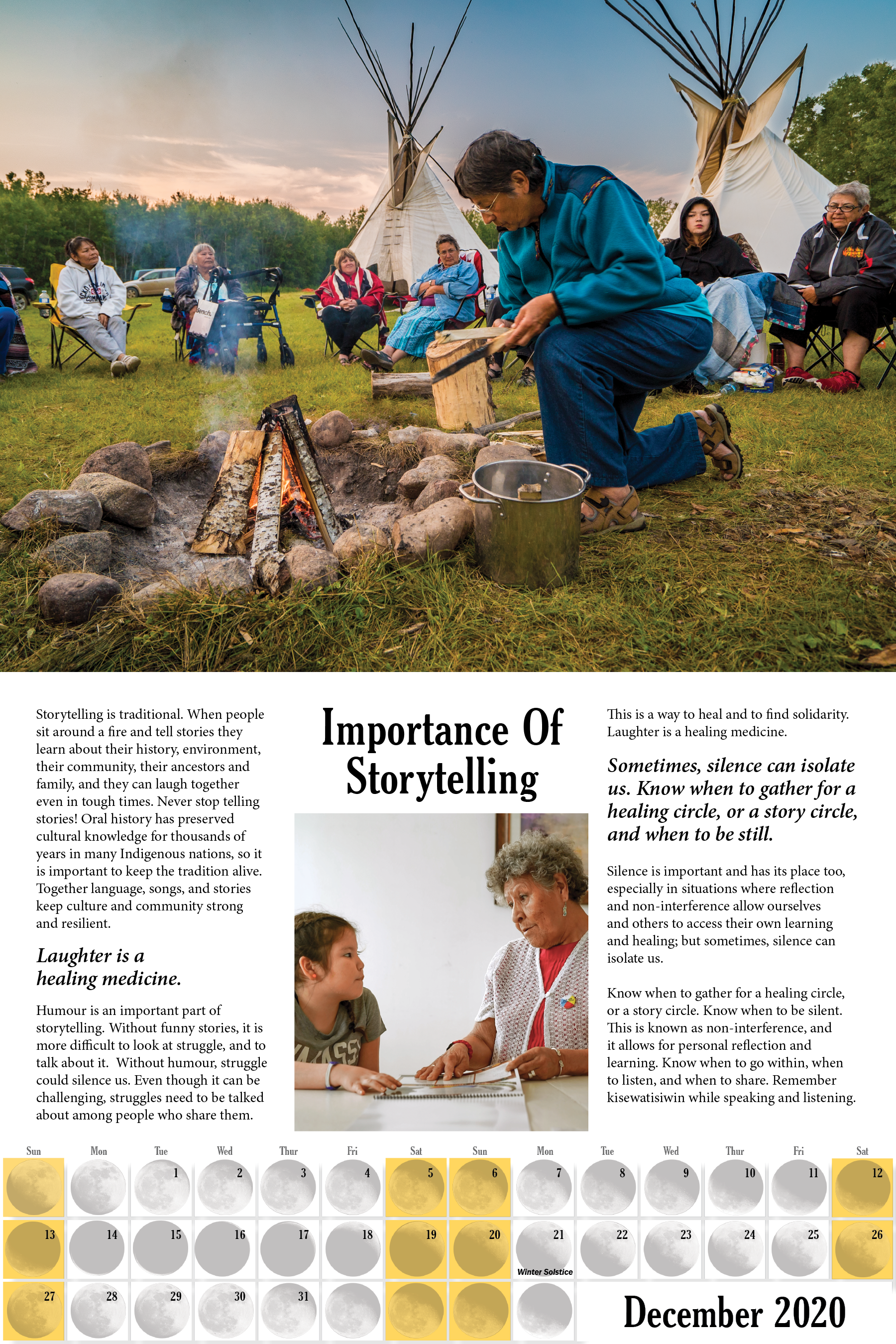
Slide title
Write your caption hereButton
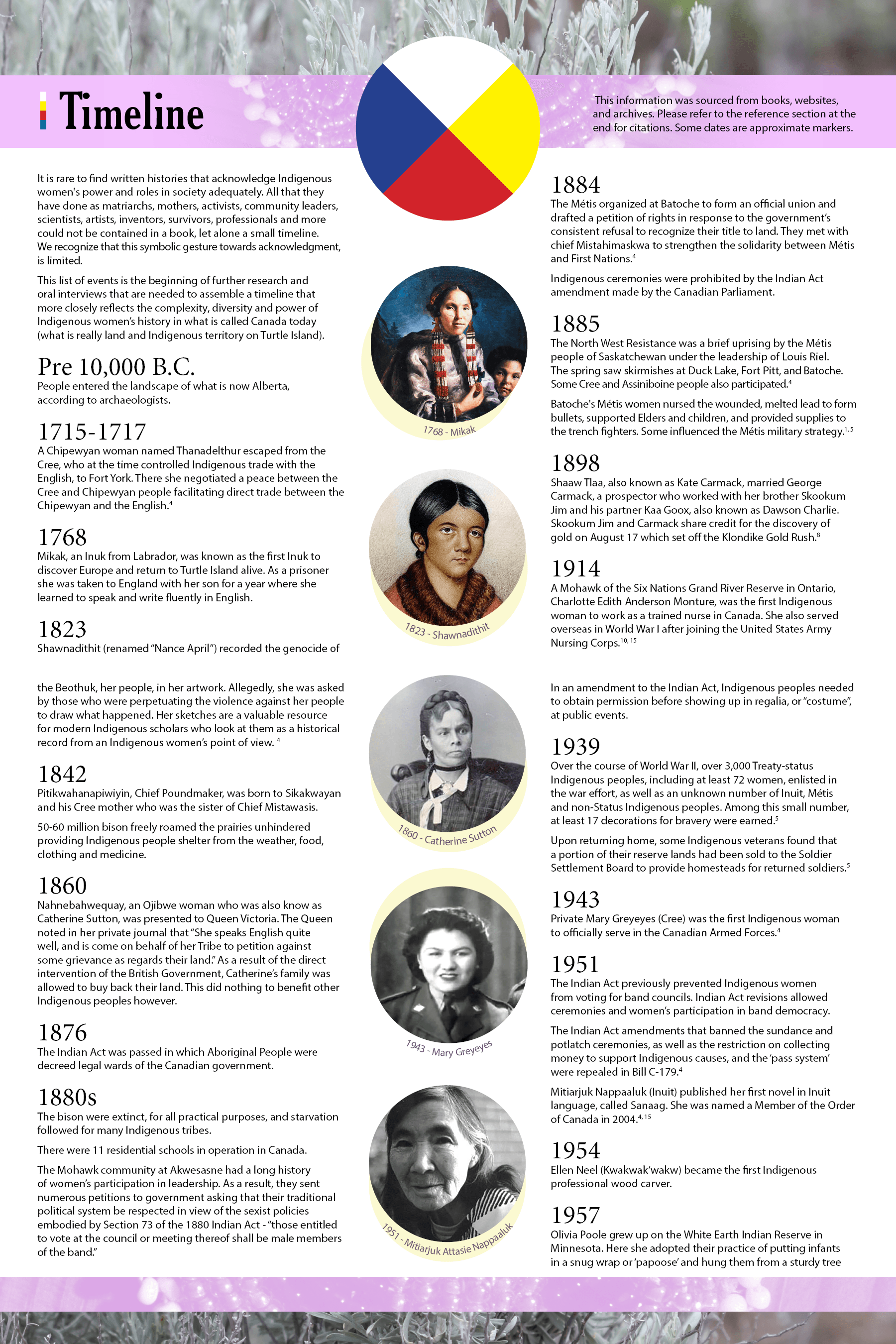
Slide title
Write your caption hereButton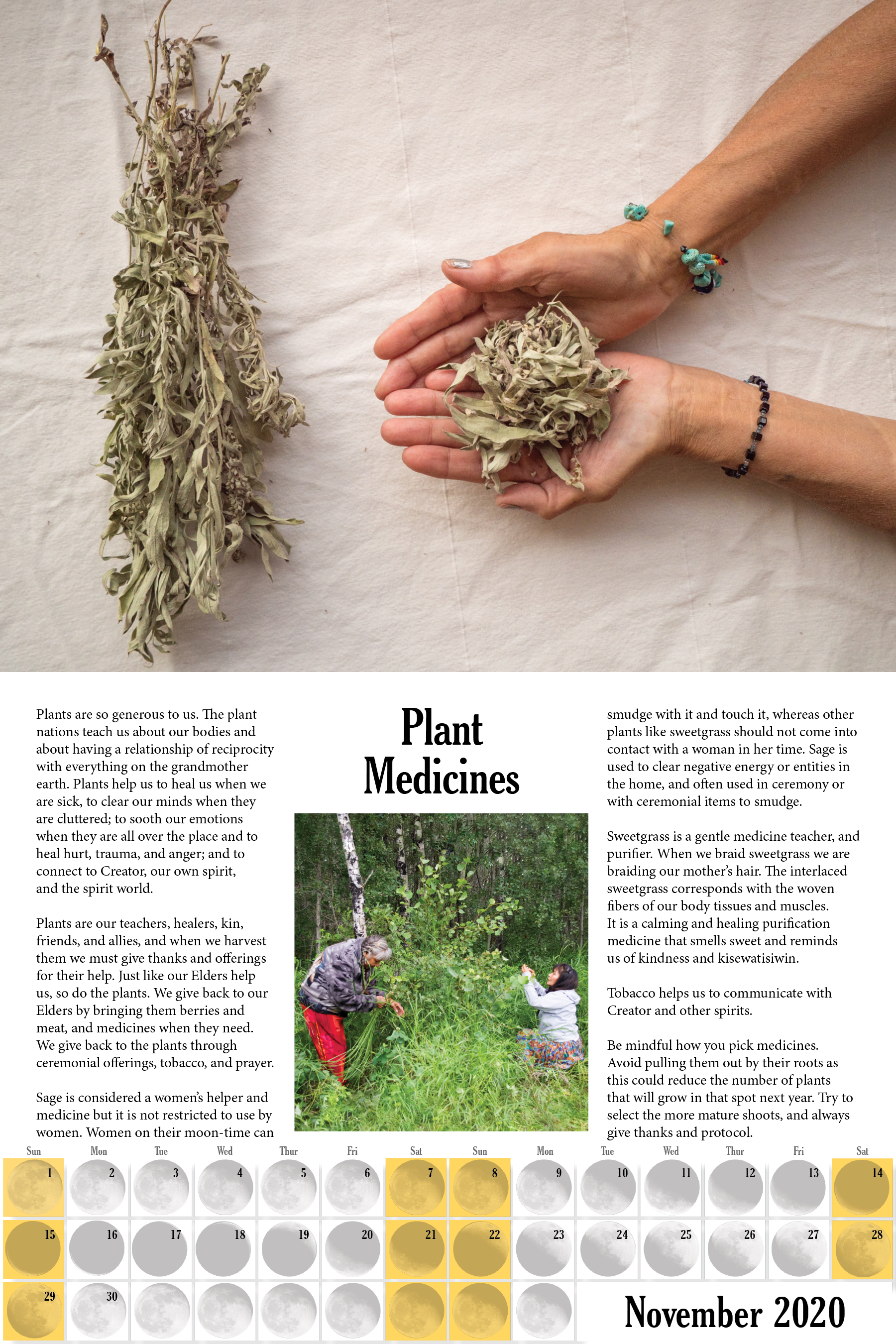
Slide title
Write your caption hereButton
Slide title
Write your caption hereButton
Slide title
Write your caption hereButton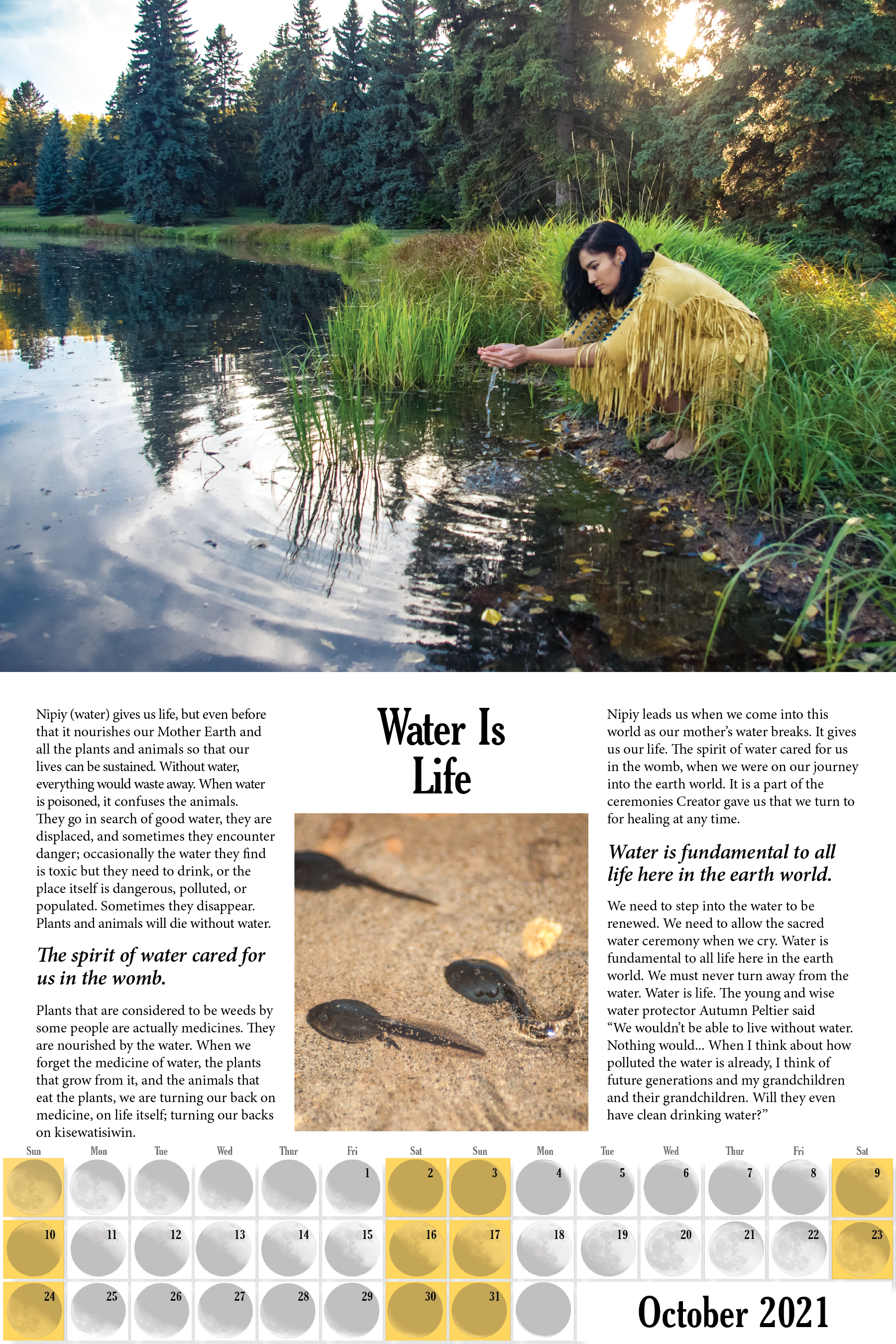
Slide title
Write your caption hereButton
Frequently Asked Questions
-
WHY DO YOU USE THE WORD "INDIGENOUS"?
We use the word "Indigenous" when the kohkoms or grandmothers we are refering to come from different nations. We prefer saying “Nehiyaw,” “Niitsitapi or Siksikaitsitapi,” “Anishinaabe,” etc. when we can, and believe that recognizing nationhood is a part of decolonization; all of these nations are Indigenous to Turtle Island, but simply referring to them as Indigenous erases their nationhood and unique histories, cultures, connections to the land, languages, and laws. When we do use the word "Indigenous," it is inclusive of Métis, Inuit, and First Nations who are all first peoples of Turtle Island.
-
WHY ARE CREE WORDS USED IN THE CALENDAR, WHERE DO THEY COME FROM?
When we interview an Elder and they use Cree words to describe a teaching, we want to preserve the language they use to describe it in the most authentic way possible. This means we need the Cree or Indigenous language spoken to describe a teaching from that culture; English does not always interpret these concepts well, and it is important to speak, preserve, and teach Indigenous languages and not anglicize the teachings by taking out Cree words if they are used.
-
HOW WERE TIMELINE POINTS SELECTED, AND WHY HAVE A TIMELINE?
A timeline is an educational tool that organizes key events in the past visually, so that we can see how we got to where we are today. It is also a way to honour and memorialize prominent figures in our communities and remember and celebrate their legacies. It is more accessible, and easier to read than a book, but can provide just as much of an overview.
Our goal was to create a timeline that focuses on events that have impacted Indigenous women’s rights, and Indigenous women’s achievements across Turtle Island. We realized in doing this research that there aren’t many if any timelines like this out there.
-
DOES CIRCLE TEACHINGS OWN THE COPYRIGHT FOR THE STORIES SHARED BY ELDERS?
No! We are respectful of the unique conditions for copyright in situations where we are publishing traditional knowledge, that cannot be owned by anyone other than the knowledge keepers and communities the knowledge comes from. The copyright goes to those who share their knowledge with us, and we have a write up in the calendar about respecting traditional knowledge, knowledge holders, and communities.
-
WHO WAS INTERVIEWED FOR THE KOHKOM CALENDAR AND HOW WERE THEY SELECTED?
When we began the kohkom project, we primarily interviewed members of the Kohkom Kisewatisiwin Society. Through word of mouth and kinship networks, we were connected with other knowledge holders living in or from communities within Treaty 6 who had teachings they were eager to share for the coming generations. We did not turn anyone away who had something to share, and we followed traditional protocol as a part of our methodology.
-
ARE THE TEACHINGS AUTHENTIC?
These teachings have been gathered from and approved by Indigenous women, grandmothers, knowledge holders and traditional Elders in Treaty 6. They are from the ancestors, teachers, and life experiences of the kohkoms themselves and therefore they are authentic.
-
WERE INDIGENOUS WOMEN EMPLOYED IN THE CALENDAR PROCESS?
Yes, our main interviewer is a Cree woman from Saddle Lake, who is related to many of the people we interviewed. We are also creating an educator’s manual for the kohkom calendar, and the woman writing it is a traditionally raised Indigenous school teacher.
Strengthening relationships and encouraging community building, as well as supporting Indigenous women, are mandates of Circle Teachings, so this is a priority to us.
-
WILL THIS INFORMATION BE PUT IN SCHOOLS TO MAKE IT ACCESSIBLE TO YOUTH?
Yes, it will be. We are currently developing a curriculum / educator’s guide to go with the kohkom calendar.
-
WERE THE STORIES REVIEWED BY INDIGENOUS PEOPLE AND APPROVED?
Yes. As stated above, all stories were reviewed by Indigenous grandmothers, knowledge holders, community leaders, and other people from communities in Treaty 6.
-
WHAT IS THE KOHKOM KISEWATISIWIN SOCIETY AND WHY ARE THEY INVOLVED?
The Kohkom Kisewatisiwin Society is a group of Indigenous grandmothers who gather in Edmonton to learn, and share teachings for the benefit of their communities. They wanted to create a calendar that helps support their mission, and that provides accessible grandmother knowledge to the public.
-
WHO PROFITS FROM THE CALENDAR?
Some of the calendar revenue will go directly to covering production and printing costs, subsidized and funded originally by Circle Teachings, with help from the Kohkom Kisewatisiwin Society, and Servus Credit Union. Revenue after that will be shared with the Kohkoms. The calendar is also a fundraising tool for the Kohkoms and other Indigenous organizations and special rates are offered for groups that want to use it this way.
-
WHY IS THE CALENDAR SO CREE FOCUSED, IS CREE THE ONLY NATION IN TREATY 6?
The calendar is Cree-leaning because a lot of the women we have interviewed are Métis or Cree. Some say that we live in “Cree country,” and though this is true in terms of what language is most predominantly spoken here (In Edmonton it’s Plains Cree mostly) there is a huge diversity of Indigenous nations with communities in Treaty 6, and lives and families in this territory as well. Edmonton alone is home to a large diversity of Indigenous folks who speak different dialects, and who have their own teachings and laws. We look forward to including as many nations as we can in the future, as more kohkoms from different backgrounds come to us to share their knowledge.
